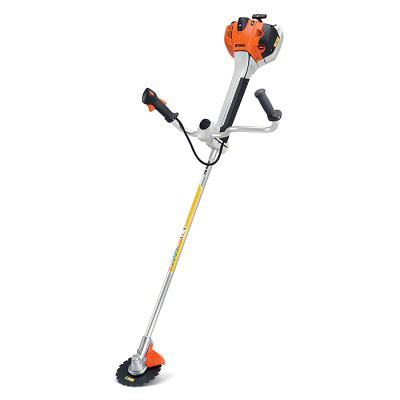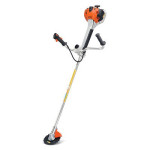If you've got an overgrown backyard or a field to clear, the right tools can make the difference between several weeks of backbreaking work and a few days' worth of brush cutting. Armed with tools like a reliable hand-held trimmer or a wheeled walk-behind brushcutter, you can make short work of out-of-control vegetation.

Check Before Clearing
Before you go in and clear a patch of land, walk through and check for things like trash, rocks, and other obstacles. Running over or into these things can damage your brush-clearing equipment, resulting in increased expense and hassle. There's also a chance of injury from flung debris or broken equipment pieces. Do yourself a huge favor and double-check where you'll be clearing, and wear protective clothing just in case.
While looking over the area, keep an eye out for ground-nesting bees and wasps. You don't want to stir-up a bee hive while clearing land. If you find one, you can either mark that location and avoid it or
destroy the hive using an insecticide designed for ground-nesting bees and wasps.
Day-Of Prep
On the day you're planning to clear brush, wear clothing that is tight-fitting so it won't get caught in equipment. Sturdy work shoes or boots, gloves, and eye protection are also a good idea. If working with cutting blades, consider wearing steel-toed boots to protect your feet. Try to choose a day that is dry, but not too hot, for brush cutting. Start work in the morning to take advantage of the coolest and brightest time of the day.
Make sure all animals and people are out of the area before you start working. Warn people to stay away while you're working and keep a sharp eye out for any one (especially children) who might wander into the area.
Clear in Stages
Depending on the type of equipment you're using and the kind of brush you have to cut, you may want to clear the area in stages. Start by using a
string-line trimmer to cut overgrown grass and weeds, then switch to a brushcutter for larger weeds, small saplings, and shrubs. Depending on the model, you can just switch-out the trimmer head for a cutting blade. You'll need a chainsaw if you want to remove larger shrubs and trees.
If you want to invest in a brush-clearing walk-behind mower you can do the job in fewer stages. Billy Goat's
BC24 Series Outback Brushcutter will cut down saplings up to 2 inches in diameter, dense brush up to 6 feet tall, and grass and weeds over 8 feet tall. The
Echo Bear Cat 190 wheeled trimmers can be fitted with a Sabre Tooth Blade to cut saplings and small trees up to 4 inches in diameter or with a Triple Blade Brush Cutter for heavy weeds, cattails, and underbrush.
Deal With Stumps
If you had to remove trees of any size, there will be stumps left to deal with. Stumps can take many years to decay if left on their own. In the meantime, they'll get in the way of lawn mowing and other yard tasks. You could cut these stumps off as close as possible to the ground, try a chemical solution, dig them out by hand, or just go the easiest rout and use a stump grinder.
Equipment such as the
Blue Bird SG1314 Stump Grinder is designed to grind stumps down to a level below the soil surface. This particular stump grinder can grind objects down to 12 inches below the soil surface, and different cutting teeth are available for different soil conditions. You can then fill-in and level soil over the roots and anything left of the stump.




